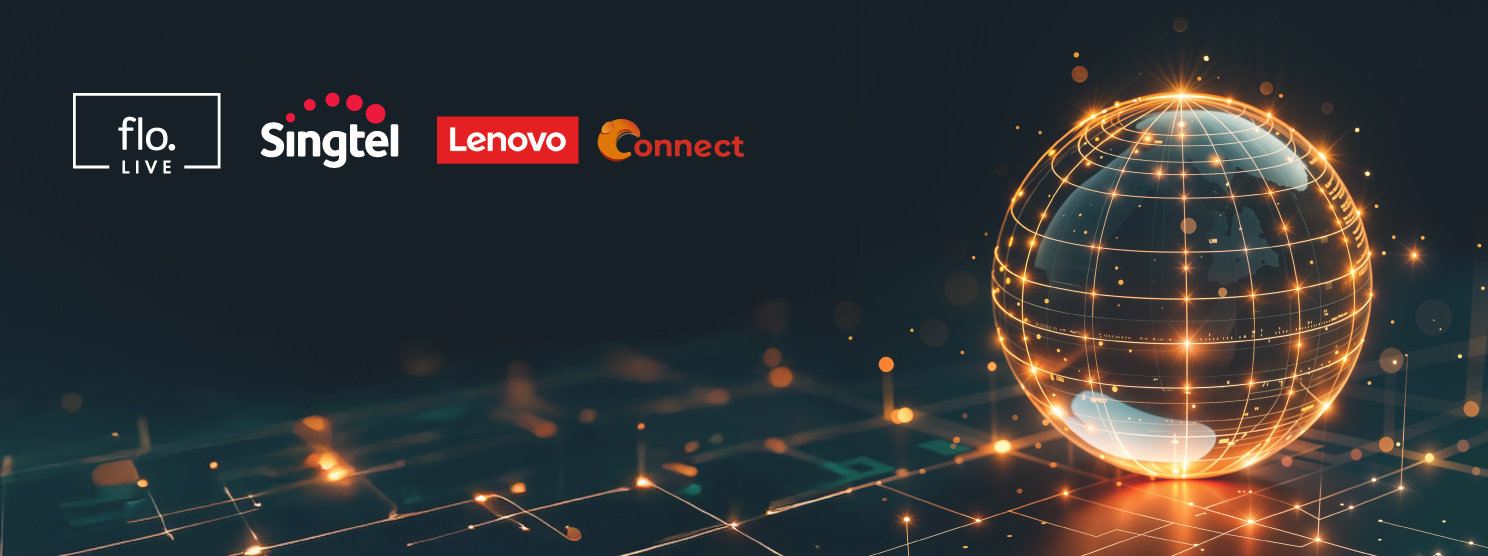Page Contents
iSIM vs eSIM: 5 Key Differences

Page Contents
What Is a SIM?
A physical SIM (Subscriber Identity Module) is a small, removable card used in mobile devices to securely store information required for connecting to a mobile network. It contains a unique International Mobile Subscriber Identity (IMSI) and authentication keys that help identify and authenticate a subscriber on a cellular network.
The SIM card allows users to access network services like voice calls, SMS, and mobile data, and often stores other information like contacts and text messages. Traditional SIM cards come in various sizes, such as standard, micro, and nano.
What Is iSIM?
An iSIM (Integrated SIM) is a type of SIM that is directly embedded into the processor of a device, eliminating the need for a separate physical card or slot. Unlike traditional SIM cards or eSIMs, iSIMs are part of the device’s System-on-Chip (SoC), providing improved integration and space efficiency.
iSIMs are designed to support the same functionalities as traditional SIM cards, including secure authentication with mobile networks. However, they are particularly advantageous in IoT devices, wearables, and compact electronics due to their smaller footprint and lower power consumption. iSIMs also device durability by reducing the risk of physical damage associated with external components.
iSIM can support both a none-reprogrammable SIM profile as well as a Remote SIM Provisioning (RS)
What Is eSIM?
An eSIM (embeddedElectronic SIM) is any type of SIM card, including a regular physical SIM, that can be reprogrammed to have different mobile numbers or profiles using a technology called eUICC. Unlike traditional SIM cards, which require physical swapping to change network providers, eSIMs—whether embedded or removable—are reprogrammable and allow users to switch carriers or activate new plans remotely through software.
eSIM technology is commonly used in smartphones, tablets, and IoT devices. It offers several advantages, including easier carrier switching, the possibility to support multiple profiles, and improved device design by eliminating the need for a SIM slot in embedded implementations.
Even in its physical form, an eSIM allows remote profile management, making it more flexible than older SIM technologies. eSIMs also provide added security since they are less vulnerable to physical theft or tampering.
Note: iSIM is also commonly compared to embedded SIM. While some use the terms interchangeably, an embedded SIM refers to a specific SIM form factor. While iSIM is built into the mobile device’s SOC, embedded SIM is a separate component soldered into the mobile device. Like an iSIM, an embedded SIM ships with the device and removes the need for physical, removable SIM cards.
iSIM vs. eSIM: Understanding the Differences
1. Technical Implementation
iSIMs are fully integrated into the device’s processor as part of the SoC architecture. This level of integration eliminates the need for separate SIM components, resulting in streamlined manufacturing processes. iSIMs share resources like memory and processing power with other system components, enhancing performance and reducing latency.
They rely on trusted execution environments (TEEs) within the chipset for secure storage and communication, making them ideal for devices where compactness and performance are critical.
eSIMs can be either embedded into the device’s motherboard or remain as removable plastic SIM cards with eUICC functionality. eSIM functionality can also be integrated into iSIMs. While embedded eSIMs do not require a dedicated SIM card slot, removable eSIMs (plastic eSIMs) function similarly to traditional SIM cards but offer reprogrammable capabilities.
2. Physical Form Factor
The absence of a physical form factor is a defining characteristic of iSIMs. Since they are embedded directly into the processor, iSIMs do not require additional space on the device’s circuit board. This makes them particularly well-suited for space-constrained devices like compact IoT sensors, smartwatches, and other wearable devices.
The removal of external SIM components also improves the device’s durability by eliminating points of failure such as removable trays or soldered modules.
eSIMs can exist in both embedded and removable forms. Embedded eSIMs (MFF2 format) are soldered onto the motherboard, while removable eSIMs are physical cards with eUICC technology. eSIM functionality can also be integrated into iSIM, and in this case the eSIM has no form factor.
3. Power Efficiency
iSIMs are inherently more power-efficient because they are integrated into the device’s processor. This integration reduces the energy required for communication between the processor and the SIM, as both are part of the same system.
Additionally, iSIMs leverage advanced power management techniques built into modern chipsets, which can optimize energy consumption dynamically based on device activity. This efficiency is critical for IoT devices and wearables that operate on limited power sources like batteries.
The power efficiency of eSIMs depends on their form factor. If they are implemented as a physical SIM or embedded SIM, they require their own power source and communication interface, which increases the overall energy demand. For devices with higher power requirements, such as smartphones or tablets, this difference may be negligible, but affects devices designed for long-term operation without frequent recharging.
4. Security
Security is a central aspect of both iSIMs and eSIMs, but iSIMs take this a step further by integrating into the processor’s secure environment. iSIMs rely on the TEE, which is an isolated area within the processor specifically designed to protect sensitive data. This eliminates the need for physical connections between the SIM and the processor, reducing the risk of hardware-based attacks.
eSIMs offer strong security features, including encryption and secure storage of credentials. However, when implemented as standalone modules, eSIMs may have a slightly higher exposure to risks like hardware tampering or fault injection attacks. To mitigate these risks, eSIMs are often encapsulated in tamper-resistant packaging and include secure boot processes to protect stored data.
5. Cost Considerations
iSIMs offer cost advantages in the long term by eliminating the need for separate SIM hardware. Manufacturers can reduce materials and assembly costs, as iSIMs are part of the device’s chipset.
Additionally, the space savings provided by iSIMs can lead to simpler and more compact designs, further reducing production expenses. However, iSIM adoption requires upfront investment in compatible chipsets and collaboration with semiconductor vendors, which may increase initial development costs.
eSIMs, when implemented as plastic SIMs or embedded SIMs, are less expensive to implement initially because they use existing manufacturing processes and components. They are a more cost-effective choice for manufacturers transitioning from traditional SIM cards to embedded solutions.
However, as device sizes shrink and the need for greater integration grows, the space and cost advantages of eSIMs become less competitive. For large-scale IoT deployments or devices where miniaturization is a priority, iSIMs are likely to be more cost-effective in the long term.
Pros and Cons of eSIM and iSIM
This section explores the benefits and limitations of eSIM, when implemented as embedded SIM, and iSIM, highlighting their impact on flexibility, efficiency, security, and cost in modern connectivity solutions.
Pros of eSIM as embedded SIM
- Flexible network switching: eSIMs allow users to switch carriers or activate new plans remotely without requiring a physical card swap. This makes them highly convenient for consumers and businesses managing large fleets of devices.
- Improved device design: By eliminating the need for a physical SIM slot, embedded SIMs enable sleeker designs and better protection against water and dust ingress.
- Widespread adoption: Embedded SIM technology is supported by most major carriers and is increasingly common in smartphones, tablets, and IoT devices, ensuring broad compatibility and ease of use.
Cons of eSIM as embedded SIM
- Hardware dependency: Embedded SIMs are still physical components on the motherboard, requiring additional space and assembly steps.
- Higher energy consumption vs. iSIM: eSIMs consume slightly more power compared to iSIMs due to their separate hardware interface, which can be a drawback for low-power IoT devices.
- Limited miniaturization potential: As a standalone module, embedded SIMs are less ideal for extremely compact devices where every millimeter counts, such as wearables or micro-IoT sensors.
Pros of iSIM
- Complete integration: iSIMs are embedded directly into the device’s processor, eliminating the need for separate SIM hardware. This enables maximum space efficiency and streamlines the manufacturing process.
- Power efficiency: By leveraging the processor’s power management systems, iSIMs consume less energy, making them ideal for battery-powered devices like smartwatches and IoT sensors.
- Greater security: iSIMs use the processor’s Trusted Execution Environment (TEE) to securely store credentials and handle authentication. This reduces the risk of tampering and strengthens overall device security.
- Cost savings in the long term: The absence of physical SIM components reduces material and assembly costs, particularly for devices manufactured at scale.
- Suitable for miniaturized devices: iSIMs are well-suited for ultra-compact devices that cannot accommodate traditional SIM slots or even eSIM modules.
Cons of iSIM
- Carrier support: iSIM adoption requires close alignment with mobile network operators, which may slow deployment in some regions or for specific applications.
- Dependency on chipset providers: iSIM functionality depends on chipset compatibility, requiring manufacturers to collaborate closely with semiconductor vendors.
- Limited availability: As a newer technology, iSIM adoption is still in its early stages, and support among carriers and devices is less widespread than for eSIMs.
- Higher upfront costs: The initial development and integration of iSIM technology can be expensive, potentially deterring manufacturers with limited budgets.
Which SIM Is Best for Your Deployment?
Selecting the right SIM technology requires evaluating unique aspects of the deployment environment and long-term goals. Here are additional considerations to help make an informed decision:
1. Lifecycle Management
- iSIM: Suitable for devices with long operational lifespans, as iSIMs are more resistant to physical wear and environmental factors like moisture, temperature fluctuations, or vibration. This durability reduces maintenance costs and the need for replacements.
- eSIM as embedded SIM: Embedded SIM modules may still be exposed to risks related to physical hardware degradation, particularly in harsh environments, which could impact the device’s lifecycle.
2. Regulatory Compliance
- iSIM: Emerging markets and industries with strict security or space requirements—such as healthcare, defense, or aerospace—may benefit from iSIM’s tightly integrated architecture, which simplifies meeting stringent regulatory standards.
- eSIM as embedded SIM: With its widespread use, embedded SIM technology is often easier to deploy in regions with established carrier infrastructure and less restrictive hardware requirements.
3. Supply Chain Complexity
- iSIM: Reduces the complexity of supply chains by eliminating the need to source and handle separate SIM components. This simplification is particularly advantageous for manufacturers producing devices at scale or with tight production timelines.
- eSIM as embedded SIM: While still simpler than traditional SIM cards, embedded SIMs introduce some additional steps in design and assembly compared to iSIMs, which could impact time-to-market.
4. Upgradability and Future-Proofing
- iSIM: Offers greater potential for future integration with advanced processors and systems, aligning with trends in device miniaturization and increased functionality. However, compatibility with legacy systems may be a challenge in the short term.
- eSIM as embedded SIM: Provides a middle ground by supporting current-generation devices and established carrier systems while still offering software-based flexibility for updates.
5. Connectivity Redundancy and Failover
- iSIM: May face limitations if used in devices requiring dual SIM functionality for redundancy or failover. Since iSIM is processor-integrated, adding a second line requires additional chipset support.
- eSIM: Supports multiple profiles, allowing seamless failover between carriers or plans without requiring new hardware. This can be critical for devices needing continuous connectivity.
6. Deployment Geography
- iSIM: Best suited for deployments in regions with advanced semiconductor supply chains and mobile operators that support cutting-edge technologies. iSIM’s adoption might be slower in areas with limited infrastructure.
- eSIM as embedded SIM: Given its established presence, embedded SIM technology is a safer choice for global deployments where immediate compatibility with carriers is a priority.
7. Environmental Sustainability
- iSIM: By integrating directly into the processor, iSIMs reduce electronic waste by eliminating physical SIM components and their associated packaging. This makes them a greener choice for environmentally conscious manufacturers.
- eSIM as embedded SIM: While more sustainable than traditional SIMs, embedded SIMs still involve discrete modules that contribute to overall device waste.
8. Scalability in IoT Deployments
- iSIM: More scalable for large IoT networks where compact devices, minimal power usage, and high reliability are critical. Its tight integration with processors makes it easier to deploy in diverse environments.
- eSIM as embedded SIM: Suitable for IoT networks requiring frequent updates or carrier changes. Its software-based activation process simplifies scaling across regions with multiple carriers.

Join Our Newsletter
Get the latest tips and insights in our monthly newsletter.









